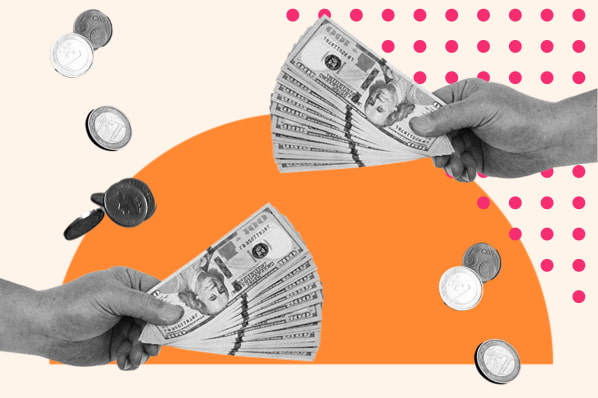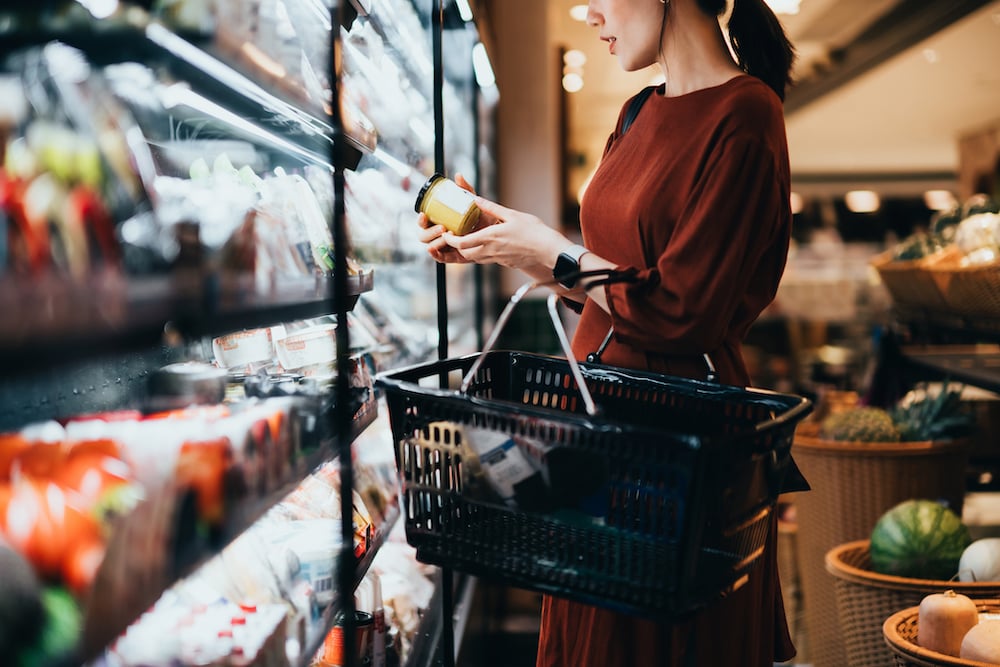One of the most common examples of economy pricing happens on an airplane. Passengers choose between first class, business class, and economy seating.
Airlines advertise first-class seats as a premium experience. It typically includes priority boarding, wider seats, extra legroom, and additional snacks. Then, they use economy pricing to fill standard seats on the plane at a lower price. It's a no-frills option that appeals to price-sensitive customers.
Outside of air travel and the actual economy, the word economy rarely comes up, but this tactic applies in many sales businesses ranging from retail to the food industry.
Here, we’ll discuss economic pricing, the strategy behind it, and the benefits and drawbacks of this model.
Economy pricing allows businesses to price products according to their production value because they don’t acquire the extra costs of advertising or marketing.
But making a profit with economy pricing is a volume game — meaning the only way to a profit is to consistently entice a large number of customers.
Economy Pricing Strategy
Production costs, profit margins, and cost are the three factors behind economic pricing. Use the following equation to calculate prices:

Production cost is the amount of money that goes into creating a product. It includes a variety of expenses, from labor to raw materials. Profit margin indicates the profitability of a product or service. Businesses should consider both these factors to determine how low they can make their prices.
Economy Pricing Advantages
Economy pricing is an effective strategy for many businesses. Here are some advantages:
1. Increase in Brand Awareness
As you’ll see in later examples, economy pricing is a strategy adopted by many businesses to sell products using a private label.
For example, while Costco sells hundreds of items from well-known retailers, it also sells a line of products under its brand Kirkland Signature. As customers purchase, use, and recommend products from Kirkland Signature, this boosts awareness of Costco.
2. Low Costs
Low costs are another significant benefit to economy pricing. Because these products do not receive heavy advertising or marketing — if it all — companies can save on this additional cost.
3. Customer Acquisition
Economy prices are typically lower than most competitor prices, allowing businesses to bring in new customers at a relatively inexpensive cost. Budget shoppers don’t care about "brand names" — they want the biggest bang for their buck, and economy pricing will help entice customers to try a different brand.
Economy Pricing Disadvantages
Although economy pricing has proved beneficial for many businesses, there are still cons to implementing the strategy. Some disadvantages to economy pricing include:
1. Competition
A prominent disadvantage to economy pricing is competition. Unless you’re selling a novelty product, there will be at least one brand directly competing with you. Similarly, well-known retailers can easily compete against economy-priced brands because of their customer loyalty.
2. Customer Disloyalty
Since many customers are primarily motivated by low price tags, economy pricing doesn’t typically invoke feelings of brand loyalty. Chances are if a lower-priced product comes along, those same customers will switch to that product.
Brands need to develop a rapport with customers to create customer loyalty. Some businesses establish this relationship by putting themselves in front of customers, and Coca-Cola does this well. The soda brand spends an average of $4 billion annually on advertising.
As the most popular soda company in the U.S., the brand has the first and second most popular sodas — Coca-Cola and Diet Coke. Coca-Cola customers are loyal. You’re sure to find customers who will quickly skip over Pepsi for a can of their favorite soda.
3. Low Quality
Economic pricing aims to create low production costs and low prices. But this can lead to low-quality products for customers. To keep costs lower, companies might find themselves cutting corners, such as using low-quality materials or hiring less-experienced workers.
Economy Pricing Examples
Multiple industries incorporate economic pricing. Below are a few real-life examples of economy pricing in action.
Target’s Up & Up vs. Pampers
Target is one of the most popular big-box retailers. The retail giant launched nearly a dozen brands to compete in food, apparel, and home decor. Up & Up is Target’s household brand that carries a range of products from hand sanitizer to multivitamins to diapers.
For a 124-count pack of diapers from Up & Up, customers will spend $14.99 shopping the Target brand. For Pampers, you’re looking at $26.99 for an 84-count pack. That’s a $12 difference for 40 fewer diapers.
Up & Up diapers are a direct reflection of Target’s economy pricing. Let’s compare this to Pampers' strategy. We’ve all likely seen the Pampers commercials — and such advertising could cause its production cost to increase.
Target, however, doesn’t need to account for this production cost because they don’t advertise its diapers. During a visit to the store, customers could see both Pampers and Up & Up on the shelves — and the lower price might sway their purchasing decision.
CVS Health vs. Tylenol
When most people get a headache, they start scrambling for the nearest pain reliever. Generic drugs and medications are prime examples of economy pricing.
Take CVS Health. The pharmacy is competing with brands like Tylenol and Advil for pain relievers. CVS can keep its prices lower for the same products with the economy pricing strategy.
The main ingredient in Tylenol is acetaminophen. At CVS, a 24-ct of Tylenol Extra Strength will run you $6.59. CVS, however, can charge their customers $5.59 for their CVS Extra Strength Acetaminophen.
ShopRite’s Bowl & Basket vs. Bubly
In 2019, ShopRite introduced Bowl & Basket — its private label food and beverage brand. Let’s compare its sparkling water to its competitor, Bubly.
Have you ever seen a ShopRite seltzer water ad? The answer should be no because there are none. Bubly, on the other hand, puts money behind its sparkling water ad campaigns. How else would you explain the numerous commercials with four-time Grammy Award winner Michael Buble?
This production increase reflects in the price of its products. While an eight-pack of Bubly Lime Sparkling Water will set customers back $3.99 at ShopRite, the grocery store chain offers their 12 pack for about fifty cents less.
Will economy pricing work for you?
Economy pricing is a strategy that many businesses have successfully incorporated into their sales plan. By keeping production costs low, companies allow themselves the potential for drawing in new customers and increasing their brand awareness. Although businesses open themselves up to competition, a sound economy pricing model can help advance its products and reputation.
Pricing Strategy
.png?width=112&height=112&name=Image%20Hackathon%20%E2%80%93%20Vertical%20(45).png)









![Price Skimming: All You Need To Know [+ Pricing Calculator]](https://53.fs1.hubspotusercontent-na1.net/hubfs/53/price-skimming-strategy.jpg)

.jpg)